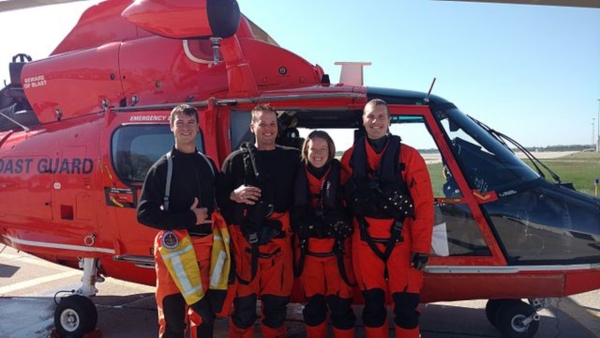Coast Guard Rescue Swimmers represent one of the most thrilling and challenging roles in the U.S. Coast Guard.
The specialists have advanced through incredibly difficult training and testing in order to achieve the rank of an Aviation Survival Technician (AST)/Helicopter Rescue team member.
You may have become inspired by the heroics that are reenacted on TV or in movies.
However, is that portrayal realistic?
What can you expect in terms of training and schooling to become an Aviation Survival Technician (AST)/Helicopter Rescue team member? What about pay?
Let’s explore the world of a Coast Guard rescue swimmer below…
Jump To A Section
What Are Coast Guard Rescue Swimmers?
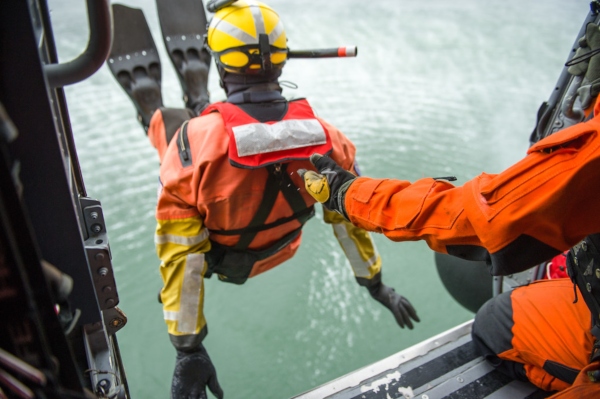
Each branch of the military, including the Navy, Air Force, Marines, and Army, have some form of “rescue swimmer.”
Most often, they are referred to as “Search and rescue swimmers” (or SARs), and their primary goal is to rescue downed aviators.
Coast Guard rescue swimmers, AKA Aviation Survival Technicians, have a primary role of rescuing distressed persons from a myriad of situations.
This can be everything from rescuing people from a boat in the middle of a hurricane to assisting with medical evacuations far out at sea.
They also serve a variety of other purposes that are not nearly as romanticized, including:
- The preparation and maintenance of emergency flotation devices (fancy word for rafts)
- Storage and handling of aviation ordnance and pyrotechnic devices
- Other administrative duties
Becoming a U.S. Coast Guard Rescue Swimmer is considered by many one of the hardest things one can do in the US military.
The schooling and training are some of the most demanding you will find in any branch of the U.S. Military.
Related Article – Coast Guard Jobs List: A List of all 24 Ratings in the Coast Guard
Aviation Survival Technicians (AST)/Helicopter Rescue Swimmers, as they are more technically called by the U.S. Coast Guard, are called upon in extreme rescue situations.
It is little surprise that they must represent the best swimmers the U.S. Military has to offer as they deal with high seas and other challenging environments. Coast Guard Rescue Swimmers have been called upon in emergency situations such as natural disasters involving heavy flooding or hurricanes in the past.
The team is currently composed of approximately 350 active-duty members. The opportunity to join the elite force is remarkably selective, as only 900 individuals have achieved high enough scores in training to become ASTs since the 1980s.
According to the course syllabus, rescue swimmers need to demonstrate advanced strength, flexibility, and endurance. They must also be able to function for 30 minutes in heavy seas.
Swimmers will get pushed to their limits, showing survival skills while holding their breath underwater and dealing with powerful water that can include waves as high as 10 to 20 feet.
Though Coast Guard Rescue Swimmers are prepared and equipped to handle dangerous situations at any moment, a fair percentage of their time is spent doing other tasks. ASTs are knowledgeable about aviation survival equipment and keep it maintained while waiting for emergency responses.
They also continue to train after receiving a position on the specialist team in order to stay sharp on skills already learned, as well as develop new ones.
What Are The Requirements To Become A Rescue Swimmer?
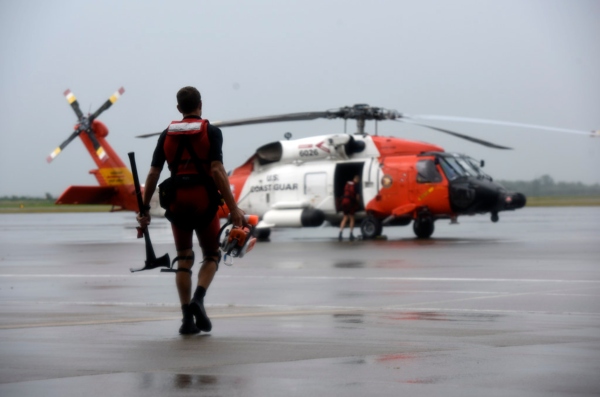
In order to qualify to even start selection as a Coast Guard rescue swimmer, there are some basic requirements you need to consider.
In addition to the basic requirements of simply getting into the Coast Guard, you also need to meet the following qualifications:
- Be in superior physical shape with no chronic orthopedic problems
- Have a high level of mental acuity and military bearing
- High degree of confidence in, around, and below water (goes without saying!)
- An aptitude for mechanics, with a focus on school courses like algebra, geometry, and machinery being helpful
- Be able to pass a physical
- Qualify for a secret security clearance
Once you pass that hurdle, the real fun begins.
Once you are officially qualified as a Coast Guard rescue swimmer, you need to maintain a certain level of fitness.
The Coast Guard requires you to take a monthly test, which ensures that you’re keeping in the shape they need you in.
The minimum physical fitness tests (or PFT) standards for a U.S. Coast Guard Rescue Swimmer include:
- Pull-ups: 5
- Chin-ups: 5
- Push-ups: 50
- Sit-ups: 60
- 25 Yard Underwater Swim: Completed 4 times
- Buddy Tow: 200 yards
- 500-Yard Swim: Under 12 minutes
It is recommended that you perform even higher than the minimum PFT standards in order to get a high enough score in AST “A” School.
Candidates can further improve their odds of becoming a specialist AST by taking the Ocean Life Guard course with the Red Cross. It is a good baseline for what you can expect as an AST.
Related Article: Coast Guard Age Limit
What Is Coast Guard Rescue Swimmer School Like?
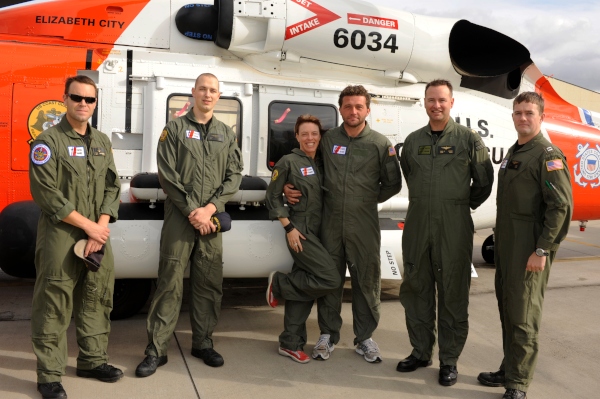
The Coast Guard Rescue Swimmer School is based out of Elizabeth City, North Carolina. Schooling for an opportunity as one of the team members lasts 22 weeks.
It includes intense physical fitness, particularly long hours of fitness in a pool. Trainees are introduced to extreme water drills and classroom instruction. The training is purposely demanding and intense. It helps gauge how candidates can do under very stressful circumstances.
Consequently, Coast Guard Rescue Swimming training is considered one of the toughest U.S. Military training courses.
There are only a reported 75 to 100 candidates that are selected each year for training. The attrition rate in some years reportedly was as high as 80 percent, though over a ten-year average has been much lower – approximately 54 percent.
Prospective candidates are then selected to participate in AST “A” School. Upon graduation, candidates must attend seven weeks of training at the Coast Guard Emergency Medical Technician (EMT) School in Petaluma, California. Rescue Swimmers with the U.S. Coast Guard must have EMT skills, and there are even higher demands for the Coast Guard Air Station in Sitka, Alaska.
In addition to EMT training, ASTs are required to attend a one-week Advanced Helicopter Rescue School (AHRS) at a station in Washington. They must also complete six months of apprenticeship before completing the syllabus and officially becoming a team member.
Coast Guard Rescue Swimmers Vs. Pararescue
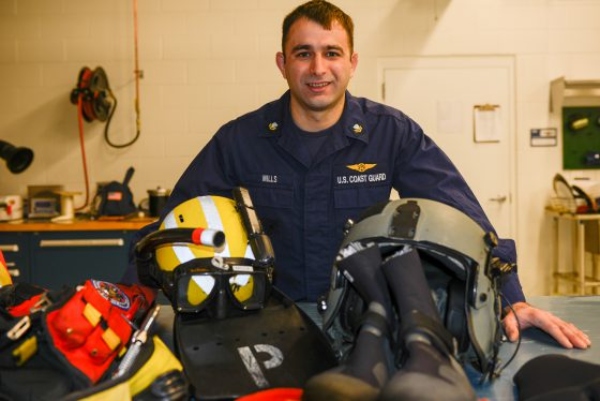
The U.S. Coast Guard is not the only branch of the U.S. Military that has its own rescue swimmers. In fact, the U.S. Navy/Marine Corps and U.S. Air Force also have their own rescue teams.
U.S. Air Force Rescue Swimmers are known as pararescuemen, or “PJs.” Like Coast Guard members, they perform sea-based and land-based rescues, though this portion of their duties is not assigned as frequently.
Pararescue must also undergo a very rigorous form of training known as CSAR (combat search and rescue). The unit reportedly has one of the highest attrition rates of any Special Operations Force in the U.S. Military.
Meanwhile, the U.S. Navy has its own unit of rescue swimmers as well. Candidates attend a four-week Aircrew School followed by a five-week Aviation Rescue Swimming School in Pensacola, Florida.
But that’s just the beginning. Navy rescue swimmers are assigned to their respective “A” Schools and have other requirements they need to complete, which takes about two years in total. For this reason, one could argue the time commitment is a little more demanding than U.S. Coast Guard standards.
Coast Guard Rescue Swimmers attend a one-week Advanced Helicopter Rescue School (AHRS) at Coast Guard Station Cape Disappointment in Washington. The station is host to Air Force pararescuemen, which provides candidates the opportunity to interact with pararescuemen as well as Navy rescue swimmers.
At the school students learn the challenges of helicopter rescues along with cliff operations and sea-cave traversing. The premier helicopter-rescue training allows ASTs to interact with rescue swimmers from the other branches of the U.S. Military.
U.S. Coast Guard Rescue Swimmer – FAQ
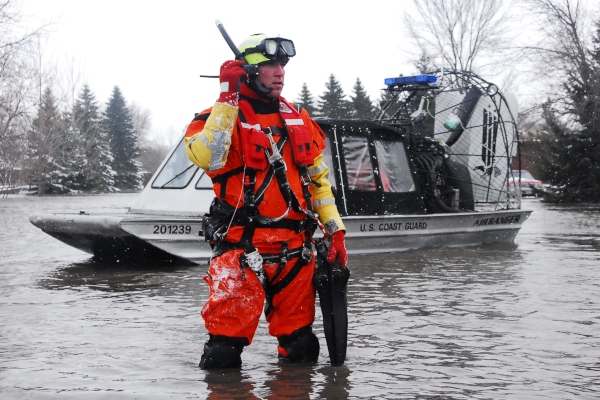
Do you have more questions about joining the U.S. Coast Guard as an Aviation Survival Technician (AST)/Helicopter Rescue Swimmer? Here are some frequently asked questions…
How Much Do Coast Guard Rescue Swimmers Make Per Year?
According to CareerBliss, U.S. Coast Guard Rescue Swimmers make about $38,000 per year.
It averages to about $18 per hour. According to the same source, the pay is approximately 27 percent lower than the national average for rescue swimmers.
However, there are many other benefits to serving in the U.S. Military that your typical job does not cover. For more information on all the benefits of joining the U.S. Coast Guard, please click here.
How Many Rescue Swimmers Are There In The Coast Guard?
According to the U.S. Coast Guard reports, approximately 350 individuals are currently part of the Coast Guard Rescue Team or Aviation Survival Technicians.
An approximate 75-100 attend training for the team each year and some progress to become specialists in the unit.
Are Women Allowed?
Women are allowed to join the U.S. Coast Guard as rescue swimmers. They must meet the same intense qualifications and complete training, but there is no written rule that restricts their involvement.
Is There A Waiting List to Get Into Training?
There is no reported waiting list to join the U.S. Coast Guard as a rescue swimmer. However, you will need to remain patient as training is long and intensive.
Most candidates spend a minimum of four to six months before progressing to AST school. The time before getting recognized as an official member of the unit is long.
Has Anyone Ever Died In Training?
Though ASTs experience some of the most demanding schooling and training of any known U.S. Military unit, there are no reported deaths during training.
Candidates are expected to undergo intense training, so they are prepared to handle dangerous, high-risk rescue missions.
However, the training sessions are still highly controlled and closely monitored. You can expect to push your body to the limits yet not fear being in danger of dying.
Conclusion
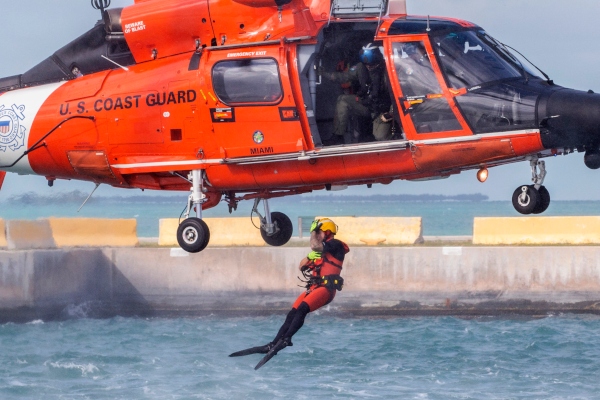
The opportunity to become a member of the U.S. Coast Guard Rescue Swimming team is one of the most fulfilling and rewarding chances in the U.S. Military.
It is a risky and challenging job, yet also comes with the opportunity to save lives. If you would like to pursue the specialized unit, making yourself aware of the intense training and schooling is step one toward becoming a fully-qualified, recognized member.
- Navy Promotion Timeline for Enlisted & Officers - June 19, 2024
- Navy SEAL Training (BUD/S) - June 19, 2024
- Navy Aircraft Carrier Flight Deck Shirt Colors Explained - June 19, 2024
General FAQ
What are Coast Guard rescue swimmers?
Officially known as Aviation Survival Technicians, the primary mission of rescue swimmers is to conduct rescues at sea, medical evacuations, and train others in life-saving techniques.
Where is their training conducted?
Rescue swimmer school is conducted at the Coast Guard Aviation Technical Training Center in Elizabeth City, North Carolina.
How much do they make?
U.S. Coast Guard Rescue Swimmers make about $38,000 per year, which averages out to around $18 per hour.
How many rescue swimmers are there?
According to official sources, it's estimated that there are around 350 Coast Guard rescue swimmers currently serving.
How hard is it to become an AST?
Out of the 75 - 100 Coast Guard personnel that attend training, only around 40 - 50 will graduate and become rescue swimmers. In rare cases, the attrition rate has been 80%.
Originally posted on April 23, 2019 @ 4:26 am
Affiliate Disclosure: This post may contain affiliate links. If you click and purchase, I may receive a small commission at no extra cost to you. I only recommend products I have personally vetted. Learn more.
